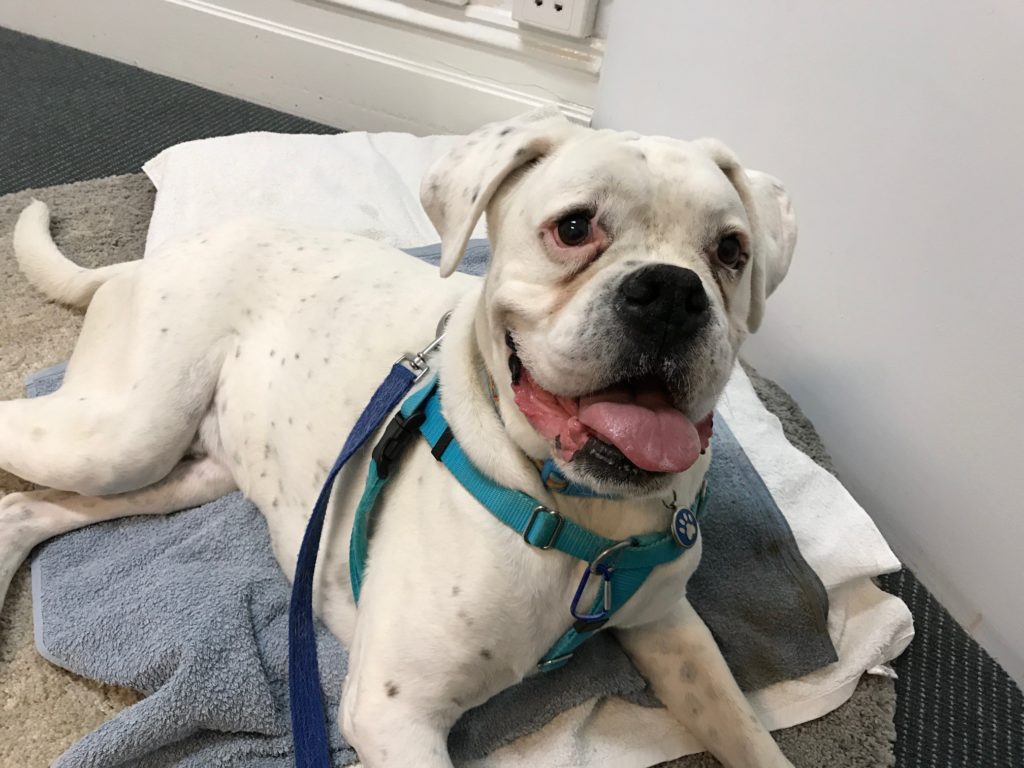So you've ditched the collar and lead - but what next? You're sold on a harness for your favourite pup - but how do you actually put it on them?
Just in case you missed our other post, a front-attaching harness paired with a lead is RSPCA South Australia's #1 recommendation for walking dogs.
Harnesses are a safe and comfortable option for dogs of all breeds and sizes, offering gentle control and encouraging loose-lead walking, while avoiding pressure on the dog's neck or back.
But we know that fitting a new piece of equipment for the first time can be daunting for you and your pup, especially when harnesses can seem like a labyrinth of confusing clasps and straps compared to the flat collar you're used to.
Never fear - with the help of RSPCA South Australia Dog Behaviour Specialist Tenelle, we've prepared a handy guide on exactly how to fit your dog's harness like a pro to make the transition that much easier!
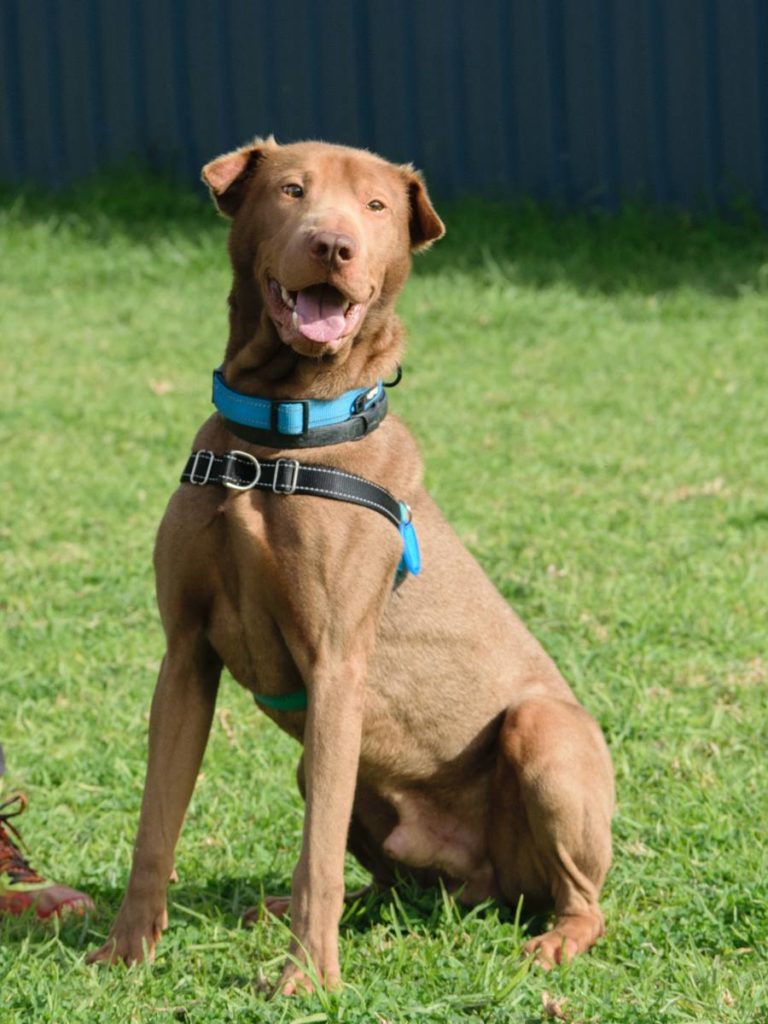
What's the harm in fitting a harness incorrectly?
If harnesses are not fitted properly, your dog can end up with a multitude of problems. Imagine switching your dog to a harness to avoid pulling, only to have them pull against the harness to make themselves more comfortable!
"We use harnesses as an adverse-free way of teaching dogs to walk," says Tenelle.
"But if the harness is incorrectly fitted, then it's uncomfortable for the dog and ends up being like a punishment to them."
So not only is an improperly fitted harness counterproductive, but it can actually be a huge safety hazard for your dog.
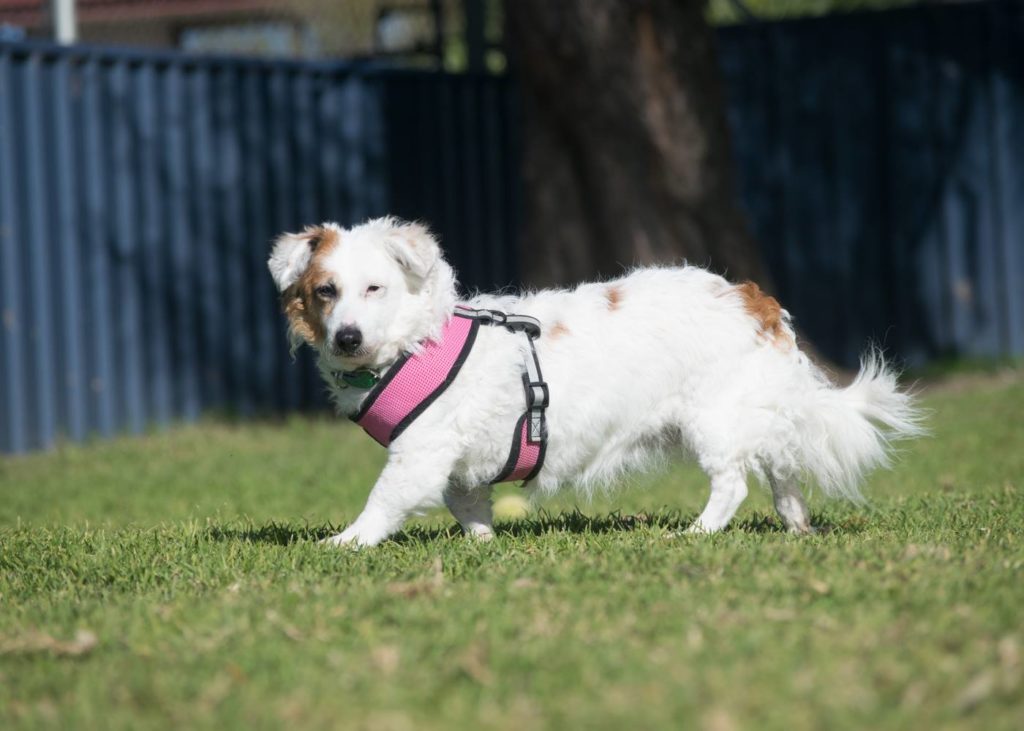
I've never used a harness before - what do I expect?
When trying a harness for the first time, Tenelle recommends using food to create a positive association, especially if your pup seems reluctant or scared.
"As you're flipping the harness over your dog's head, feed them a treat at the same time so they associate the harness with good things," she suggests.
This should help with your doggy's nerves, but it's only step one. If your dog seems calm and happy, it's time to move onto the next step - making sure the harness is fitted how it should be!
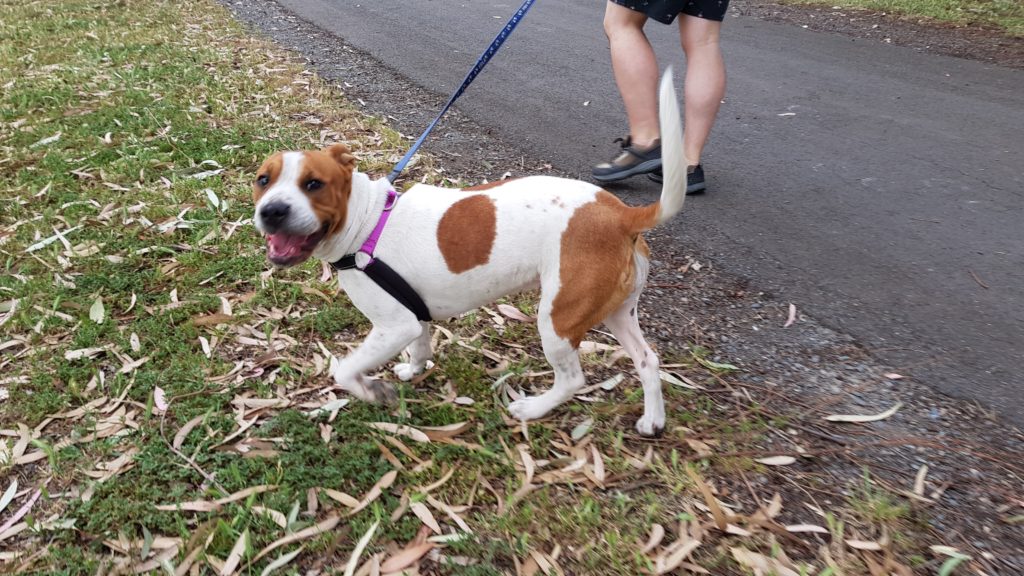
How do I adjust the harness properly?
Tenelle tells us that "good quality harnesses are over-the-head just like a collar and easy to put on, making them less invasive for the dog".
Just like a flat collar, the overhead harness should be secure, but not too tight. To make sure that the harness is adjusted comfortably, check that you can fit two fingers beneath it.
"All harnesses come with a guide on how to fit them, but all dogs have different shapes, so there's a real art to fitting," Tenelle says.
To lead you through the fitting process, we've prepared a step-by-step guide below. You can also follow along the process in this video by our friends at EasyWalk.
Overhead harnesses, step-by-step
Check that your dog is comfortable and showing no signs of backing away from the harness.
- Flip the head piece over your pup's neck.
- Adjust the top straps around their chest and the bottom straps under their legs so that you can fit two fingers under it.
- If they seem comfortable, clip the harness up and fasten the lead on.
- Admire your happy pup in their comfy new harness!
How do I know I've done it properly?
If the harness is too loose, the dog can slip an elbow through the straps and back out of it - yikes.
But to check that you've fitted the harness properly, Tenelle recommends comparing the way your dog walks with and without the new piece of equipment.
"If they walk differently with the harness on, then it isn't comfortable and you may need to readjust the straps," she says.
"A properly fitted harness won't restrict the dog's movement and they'll be able to take full strides on their front feet."
If your harness is fitted correctly, it should look something like this - and your dog will be ready to go!
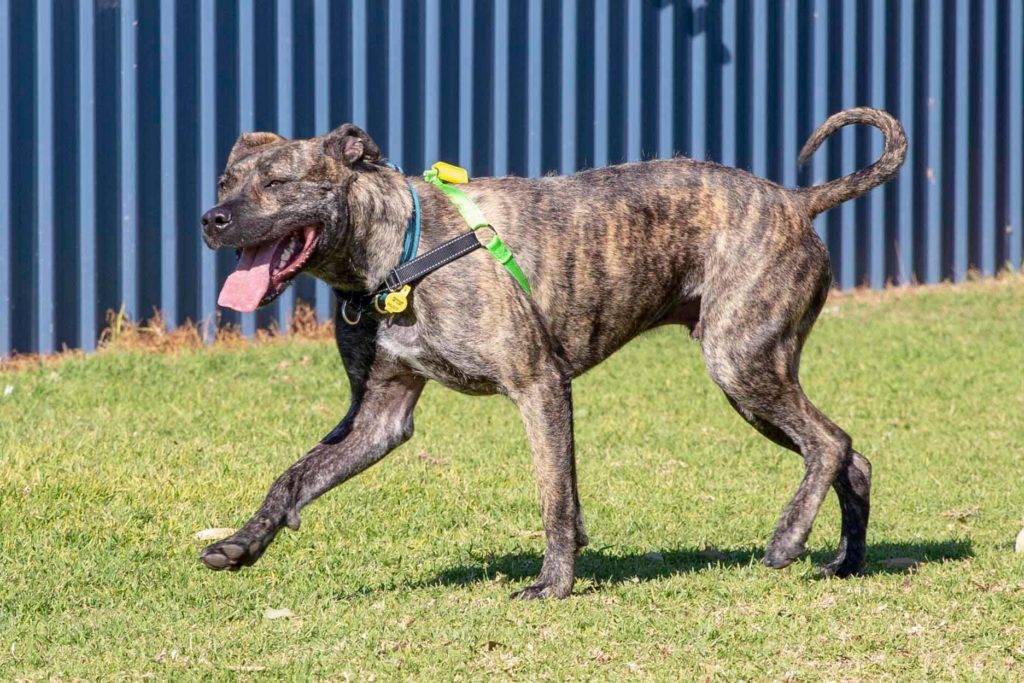
It's still not working for my pup 🙁
"If your dog still really struggles on their own, it's not the end," Tenelle tells us.
"We recommend getting in contact with a private trainer who can help get them used to the harness - all dogs can adjust eventually and they'll be better for it."
Phew!
We hope the lives of you and your pup are forever changed by their shiny new harness! Want more info about dog behaviour and learning? Check out RSPCA Dog Training or have a suss of our Lead By Example campaign.

